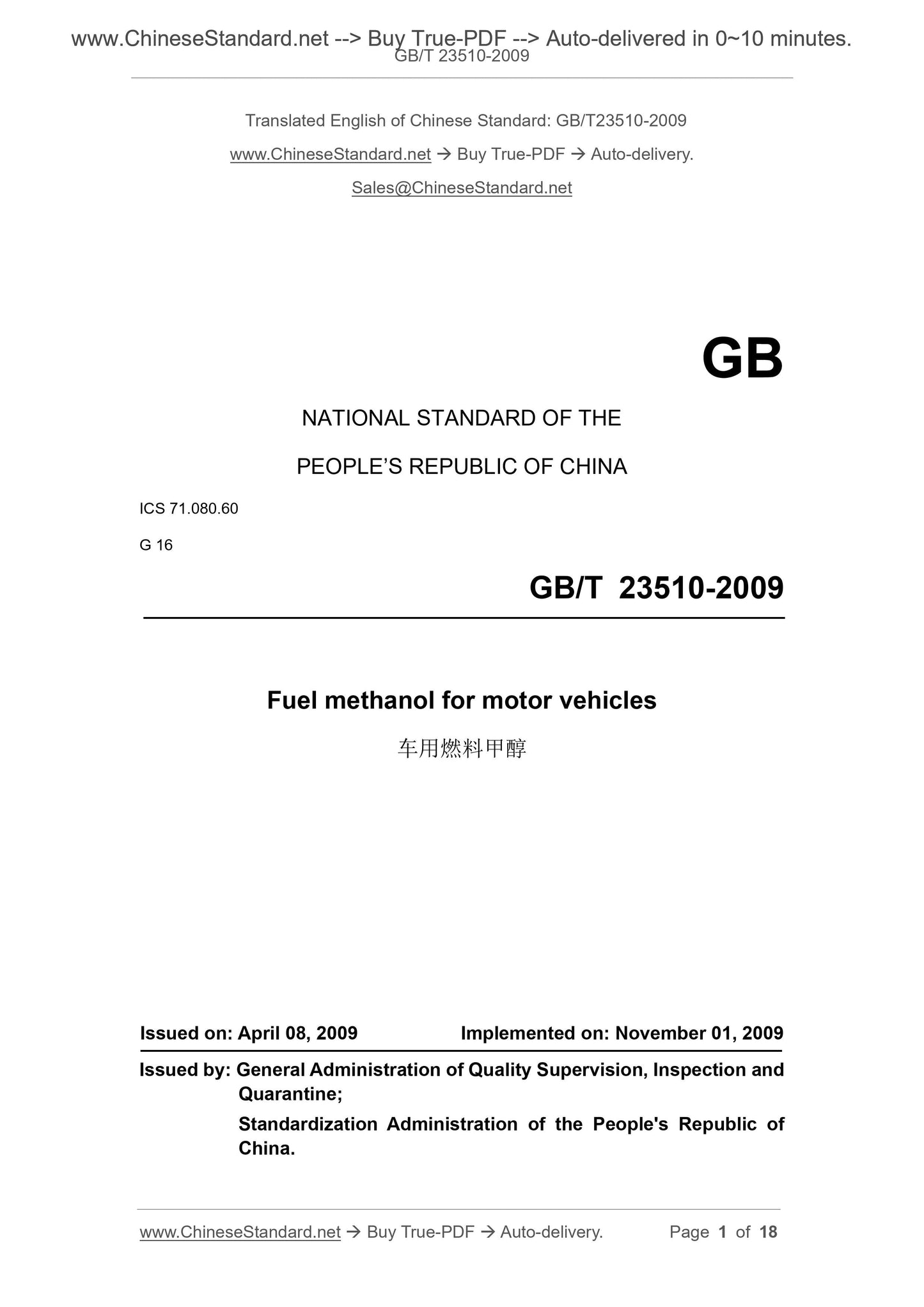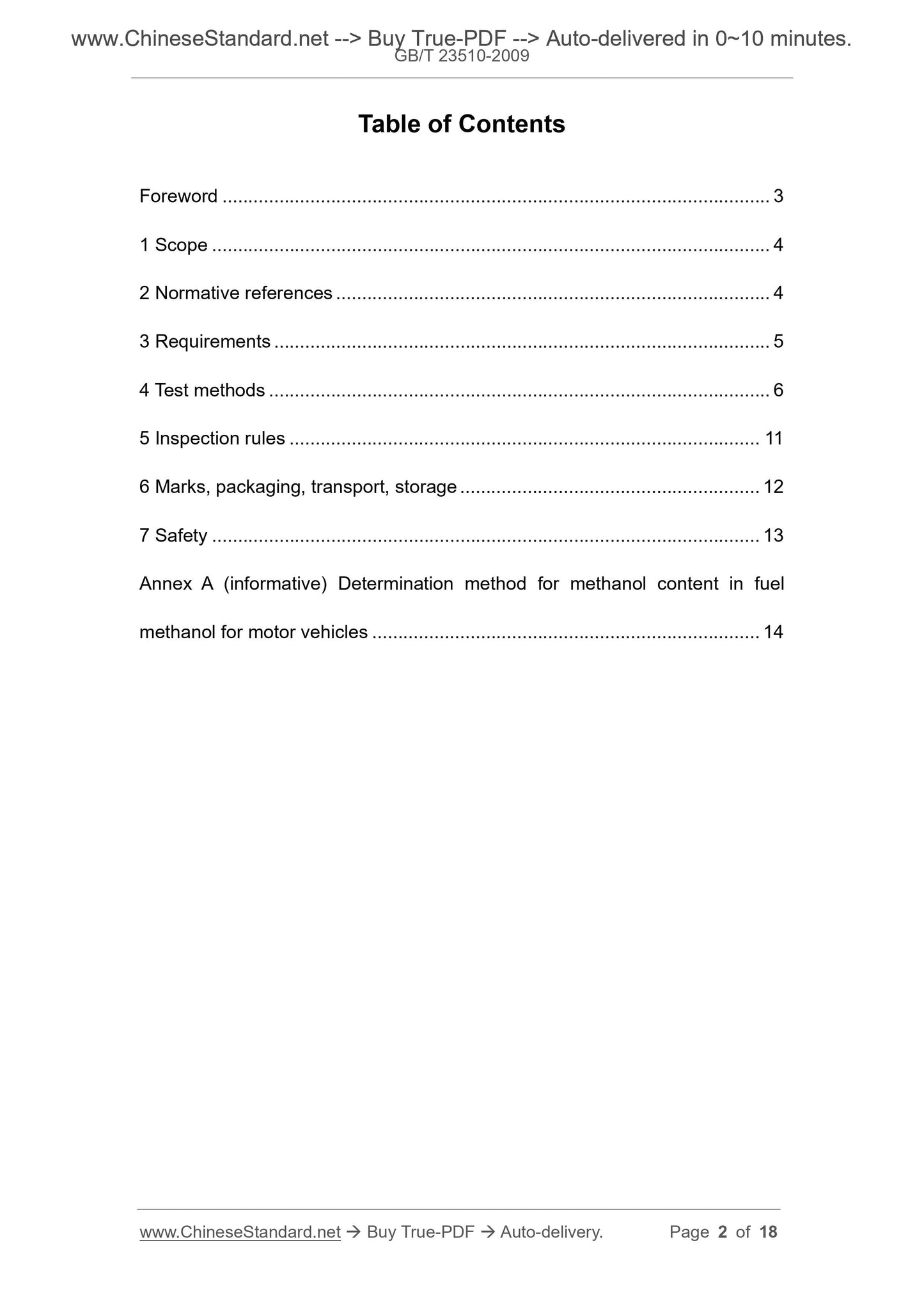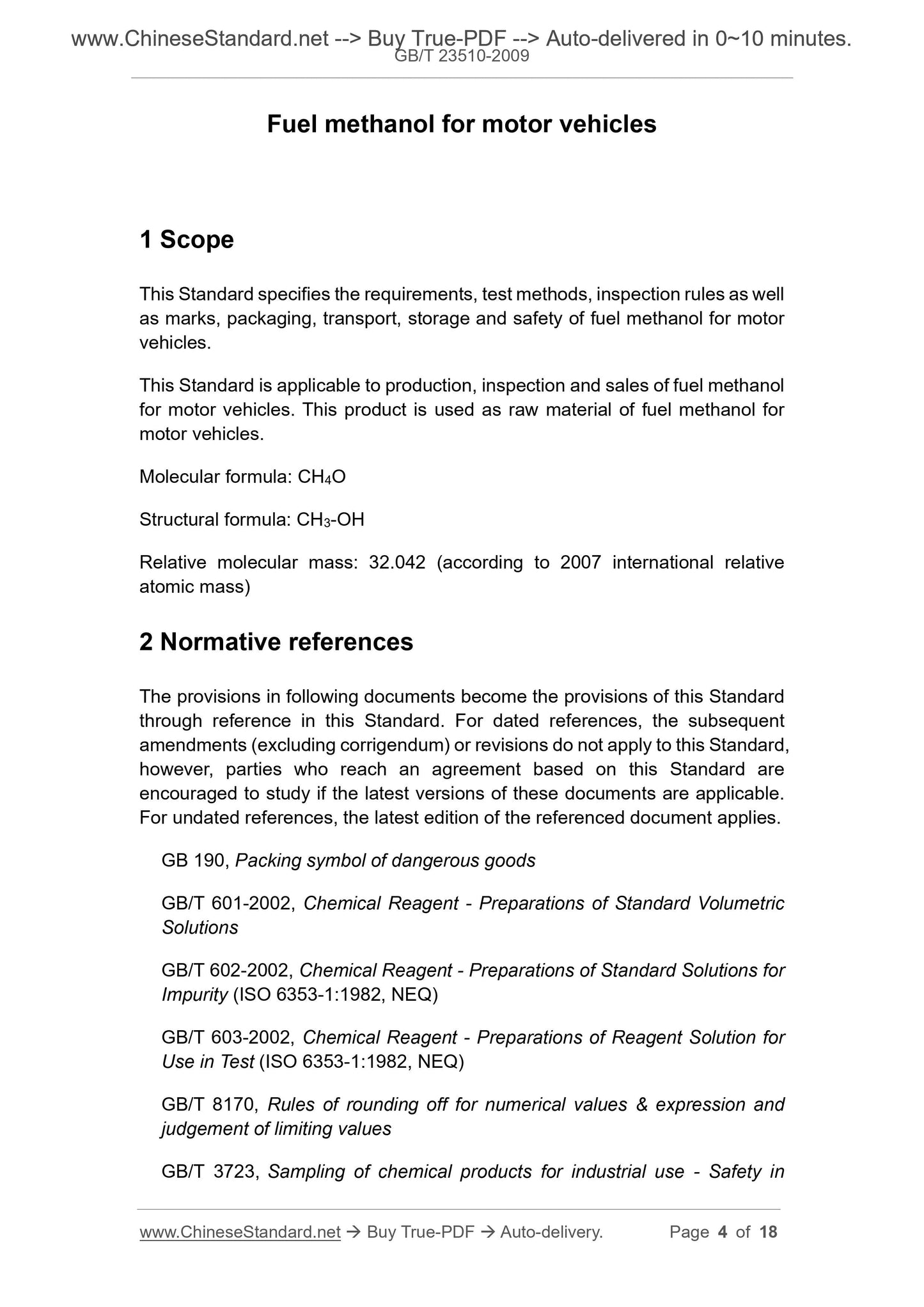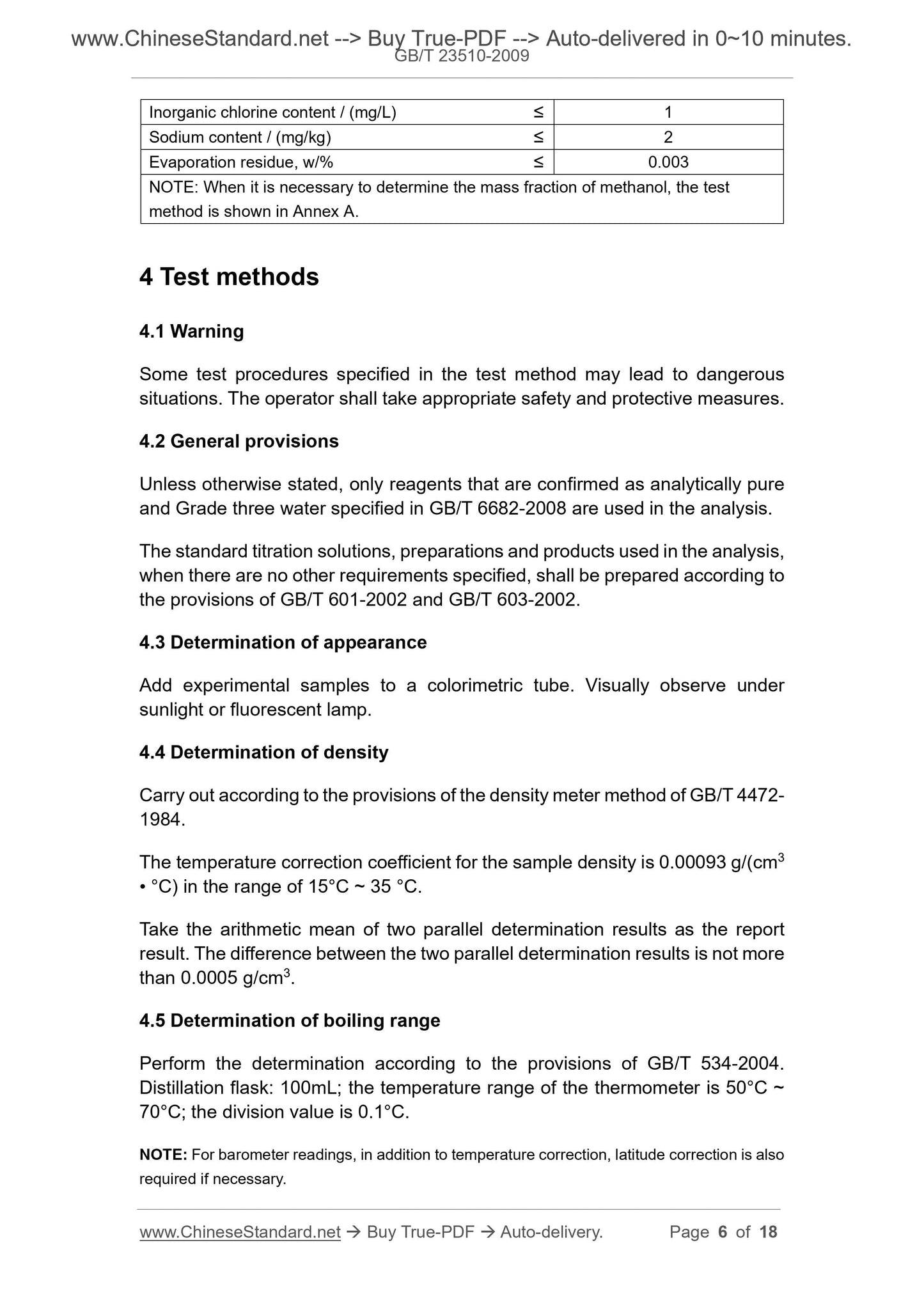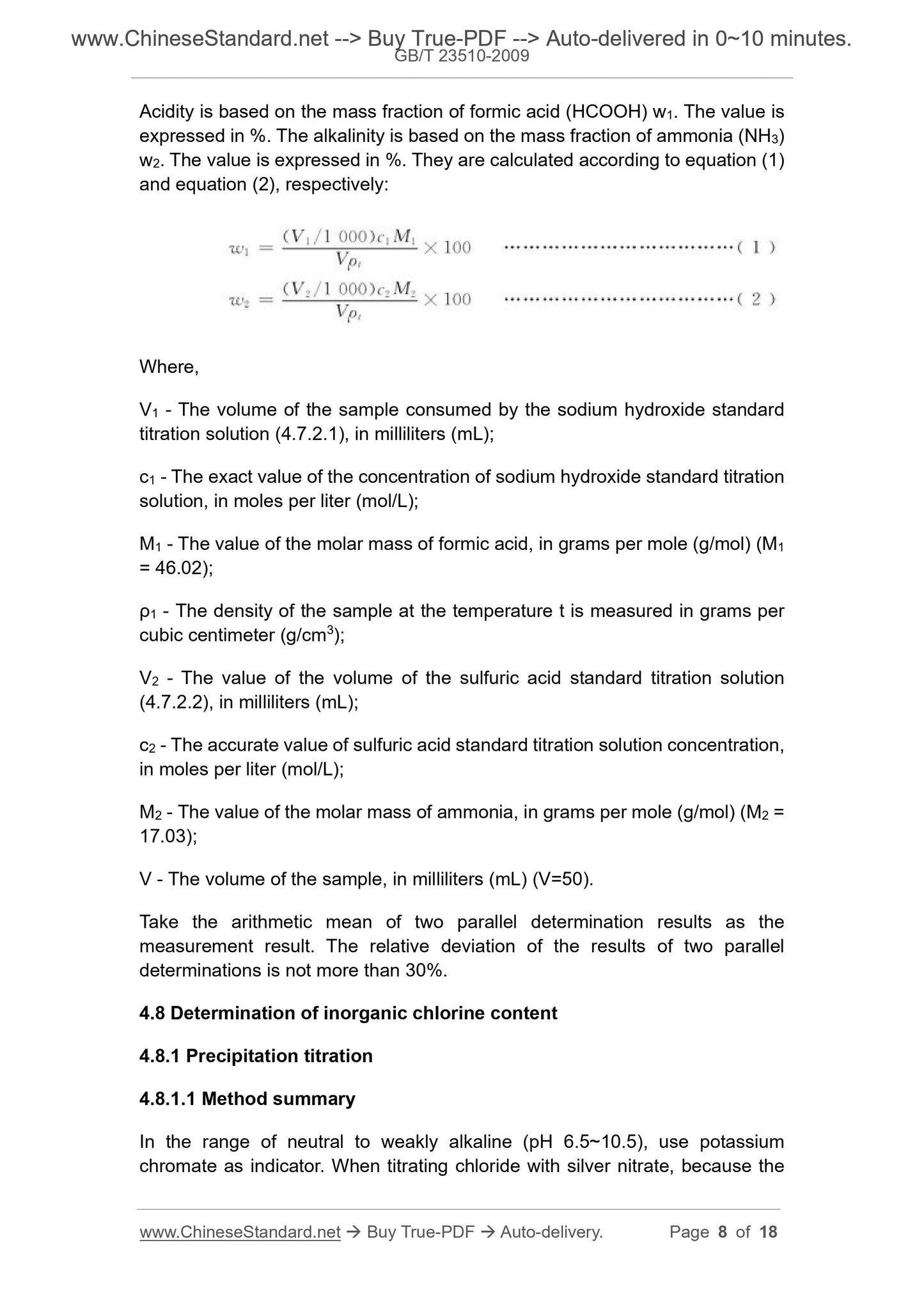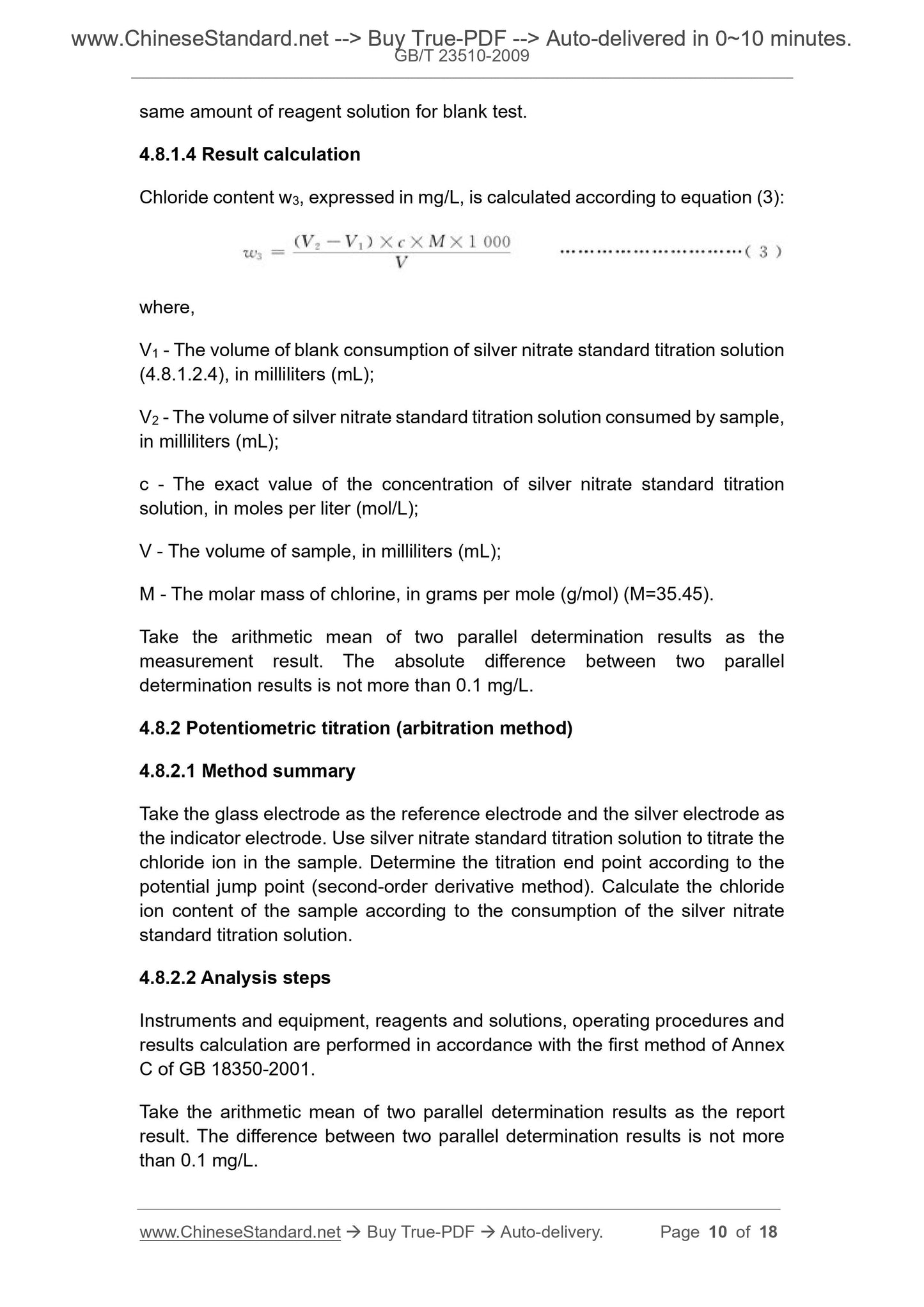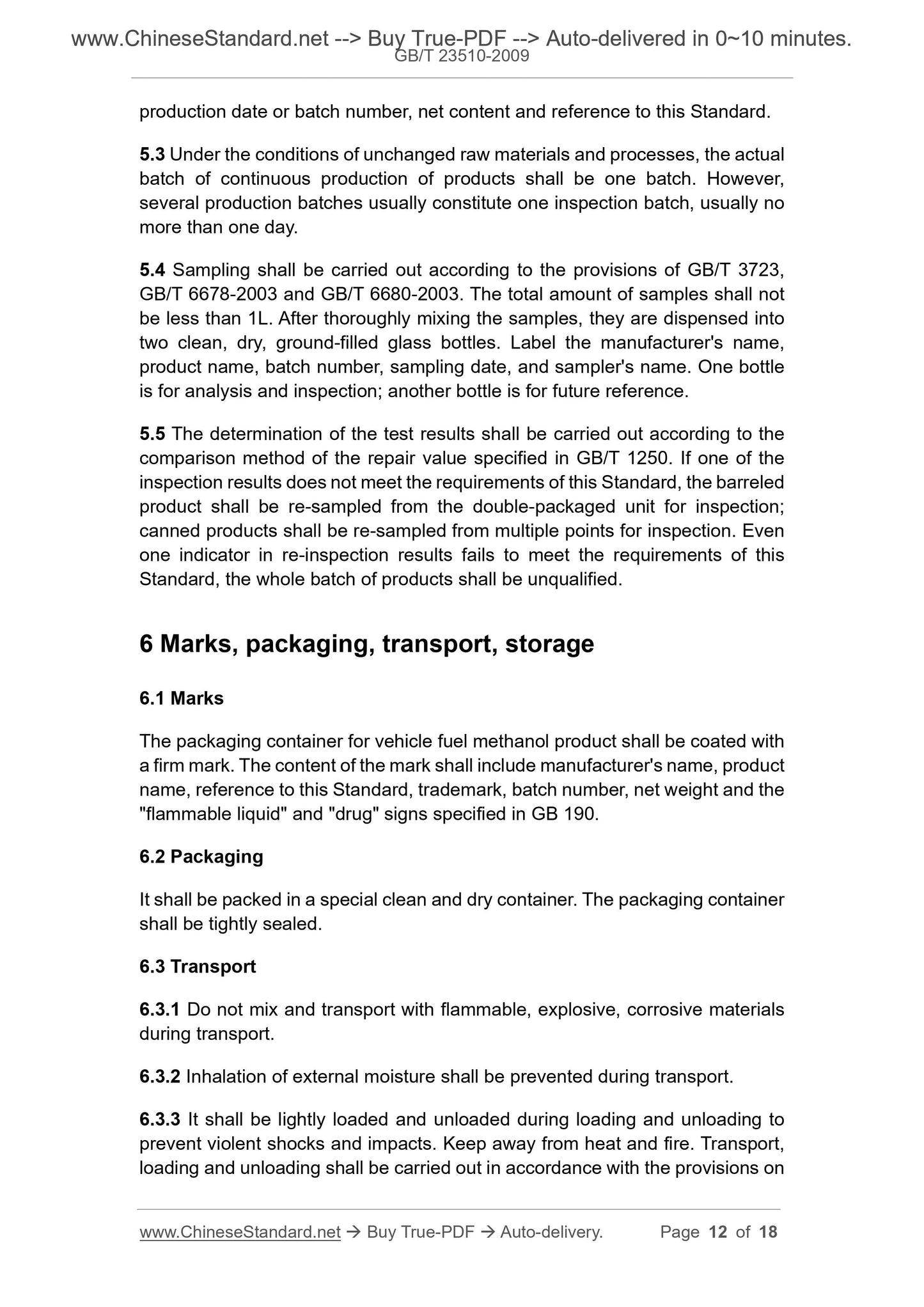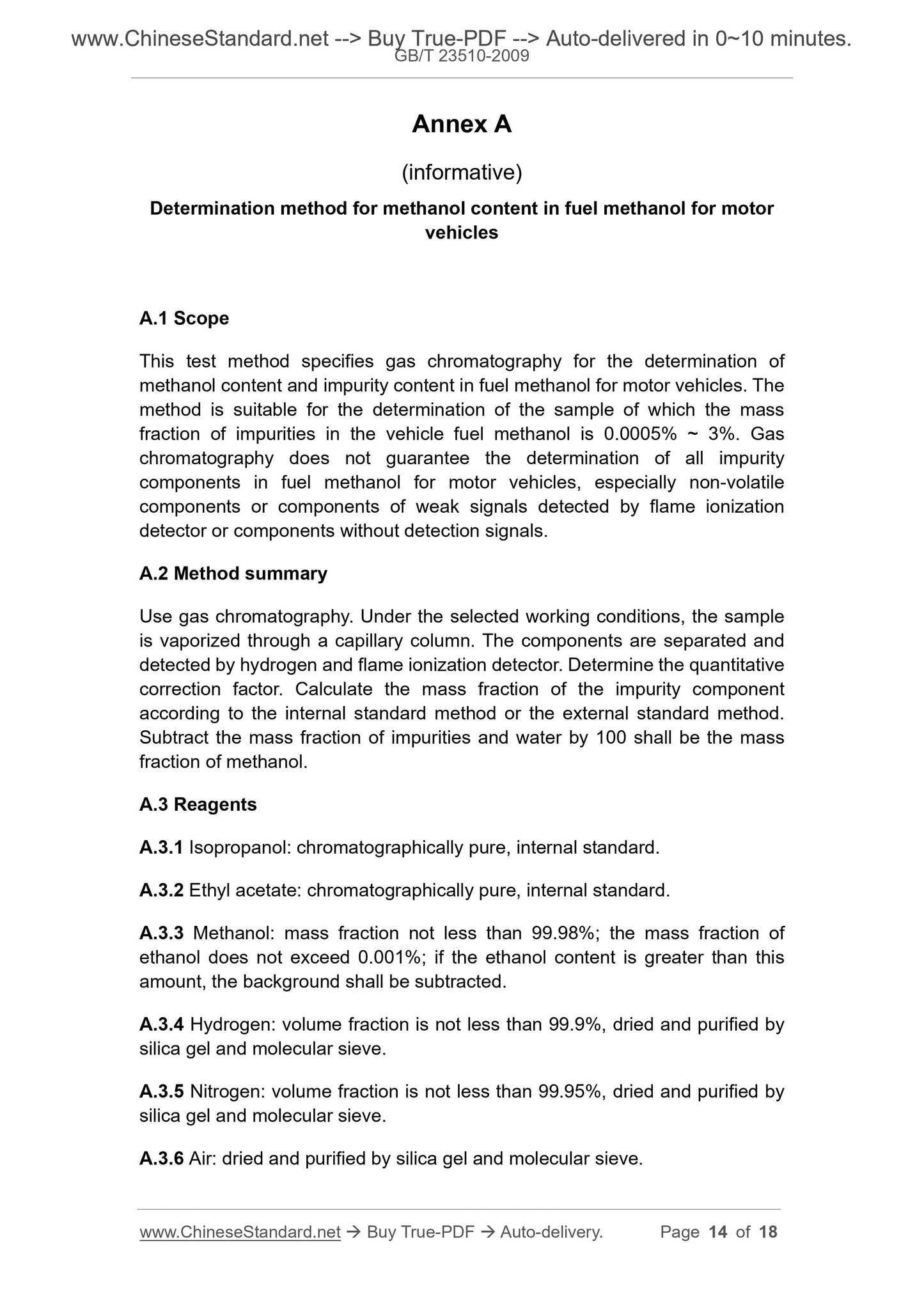1
/
of
8
www.ChineseStandard.us -- Field Test Asia Pte. Ltd.
GB/T 23510-2009 English PDF (GB/T23510-2009)
GB/T 23510-2009 English PDF (GB/T23510-2009)
Regular price
$85.00
Regular price
Sale price
$85.00
Unit price
/
per
Shipping calculated at checkout.
Couldn't load pickup availability
GB/T 23510-2009: Vehicle fuel methanol
Delivery: 9 seconds. Download (and Email) true-PDF + Invoice.Get Quotation: Click GB/T 23510-2009 (Self-service in 1-minute)
Newer / historical versions: GB/T 23510-2009
Preview True-PDF
Scope
This Standard specifies the requirements, test methods, inspection rules as wellas marks, packaging, transport, storage and safety of fuel methanol for motor
vehicles.
This Standard is applicable to production, inspection and sales of fuel methanol
for motor vehicles. This product is used as raw material of fuel methanol for
motor vehicles.
Molecular formula: CH4O
Structural formula: CH3-OH
Relative molecular mass: 32.042 (according to 2007 international relative
atomic mass)
Basic Data
| Standard ID | GB/T 23510-2009 (GB/T23510-2009) |
| Description (Translated English) | Vehicle fuel methanol |
| Sector / Industry | National Standard (Recommended) |
| Classification of Chinese Standard | G16 |
| Classification of International Standard | 71.080.60 |
| Word Count Estimation | 10,124 |
| Date of Issue | 2009-04-08 |
| Date of Implementation | 2009-11-01 |
| Adopted Standard | ASTM D1152-2006, NEQ |
| Regulation (derived from) | National Standard Approval Announcement 2009 No.4 (Total No.144) |
| Issuing agency(ies) | General Administration of Quality Supervision, Inspection and Quarantine of the People's Republic of China, Standardization Administration of the People's Republic of China |
| Summary | This standard specifies the requirements for vehicle fuel methanol, test methods, inspection rules and signs, packaging, transport, storage and security. This standard applies to the production of vehicle fuel methanol, inspection and sales. The product is used as a raw material for methanol fuel vehicles. MF: CH4O structural formula: CH3-OH relative molecular mass |
Share
